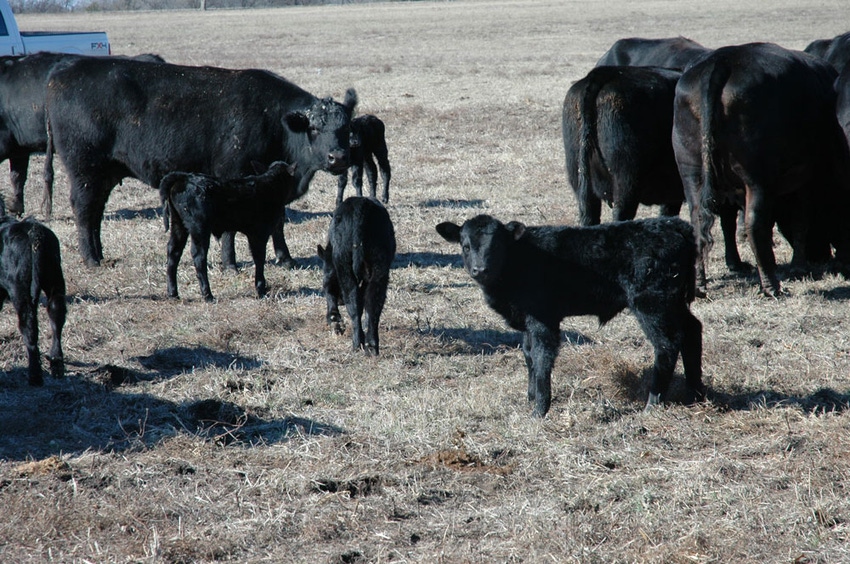October 28, 2013

The U.S. cattle herd may be starting to regain numbers lost to the devastating drought that has gripped the Southwest for the past three years and shows some evidence of continuing.
Market reports indicate that cattlemen are buying more heifers to rebuild the beef herd, says Derrell S. Peel, Oklahoma State University Extension livestock marketing specialist. He cites one specific market demonstrating this shift.
"The October 24, 2013, auction summary for Valentine, Nebraska, is the most current example of breeding versus feeder demand for heifers," Peel said. "The summary shows several sets of four-weight to six-weight heifers selling as replacements. Several lots sold on a per hundredweight basis but denoted as replacements, and several lots sold on a per head basis, bringing even higher prices.
"For example, med/large number 1 heifers ranging from 521 to 567 pounds, sold from $169.27 hundredweight to $173.60 as feeder heifers but sold at $185 hundredweight as replacements or by the head for $1,197.75, which is equivalent to $227.28 per hundredweight and $1,274.38, the same as $225.95 hundredweight."
If you are enjoying reading this article, please check out Southwest Farm Press Daily and receive the latest news right to your inbox.
By contrast, Peel said, steers ranging from 519 to 574 pounds sold from $192.24 to $205.76 per hundredweight. Forty-five percent of the heifers sold in this sale sold as replacements, he said.
"I expect to see more of this range of heifer values, if not this fall, certainly next spring as long as forage conditions look promising," he said.
A partial check of auction reports from around the country for the last week indicated at least 10 markets where replacement heifers are noted in the feeder heifer auction summaries, Peel said. Most of these reports are in Nebraska and South Dakota but in several other states as well. Heifers denoted as replacements are bringing significantly higher prices than feeder heifers of the same weight and class.
Replacement heifers are priced with small discounts to comparable steers or even higher prices in a few instances, he said. Based on Oklahoma City auction prices, 525-pound heifers have been discounted to steers an average of 11.6 percent over the period 2008-2012. So far in 2013, the discount has averaged a little more at 12.8 percent in several specific cases. Last week, the replacement heifers were discounted only 2 percent to 4 percent from comparable steers, with some examples of heifers priced higher than steers, he said.
The delayed October cattle on feed report, due now October 31, is expected to show a greater decrease in heifers on feed, which dropped sharply in the last half of 2012 then increased in the first half of 2013. Decreasing heifer slaughter is expected for the remainder of this year, Peel said.
Also of interest on Southwest Farm Pre:
Value-added program improves cattle sales price
Cattle producers young and old should plan accordingly for drought
You May Also Like




